National parks
© Copyright 2024-25 by GTI Travels Pvt. Ltd.
The forest of Bandhavgarh was the hunting reserve of the Maharaja of Rewa till Rewa kingdom was merged with the state of Madhya Pradesh in 1947 at the time of the independence of India.

Nestled in the heart of India in the Umaria district of Madhya Pradesh state, the Bandhavgarh National Park holds a distinctive place in the Indian Wildlife tourism due to being a perfect blend of rich wildlife, picturesque landscape and archaeological significance. Spreads in the area of around 1536 sq km at the foothills of the Vindhya Range, the scenic forest of Bandhavgarh is the widely famous tiger reserve in India for the better tiger sighting. The forest of Bandhavgarh was the hunting reserve of the Maharaja of Rewa till Rewa kingdom was merged with the state of Madhya Pradesh in 1947 at the time of the independence of India. However, the Maharaja of Rewa holds the hunting rights until the forest finally designated as the National Park in 1968. In the year 1993, the National Park of Bandhavgarh was taken under the Project Tiger and became the tiger reserve forest.
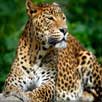
Known for the rich biodiversity, the forest of Bandhavgarh is the prominent wildlife destination in India for the forest excursion and sighting of the numerous wildlife species along with the vivid beauty of the forest. Every year, thousands of Nature lovers and wildlife tourists visit this park for the Jungle Safari to experience the thrill of roaming in the Jeep or on the elephant in the Den of the Royal Bengal Tigers, the most dangerous predator of the forest. The landscape of the forest constituted of the dry deciduous forest, rocky hill forest, swamp areas, grasslands sprawled over 32 hills, sharp cliffs, large plateaus and open meadows. The Bandhavgarh region has the fairly moderate climate and favourable ecology to boost the growth of the diverse flora in the forest which results in Bandhavgarh National Park is being home to more than 300 flora species. The forest primarily covered with the Sal trees around the low land and Bamboo trees along the slope and the mix vegetation on high land.
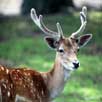
The dense forest of Bandhavgarh National Park is the natural habitat to over 35 species of mammals, more than 300 species of birds, around 80 butterfly species and various species of reptiles. The Royal Bengal Tigers are on the top of the food chain with the fairly good population, which makes the Bandhavgarh National Park one of the high-density tiger reserves in India. Bandhavgarh forest is quite famous for having both the White tigers and the Bengal Tigers in its habitat. Other prime species of fauna that enrich the wildlife of Bandhavgarh are Leopards, Wild Boar, Sambar, Barking Deer, Spotted Deer, Nilgai, Gaur, Sloth Bear, Chausingha, Chinkara, Bengal Fox, Asiatic jackal, grey mongoose, Jungle Cat, striped hyena, Langur, etc. The avifauna primarily includes little grebe, lesser adjutant, egret, sarus crane, crested serpent eagle, black kite, black vulture, Egyptian vulture and many others. The Indian Cobra, Krait, Viper, Python, Ratsnake and the turtles are the key reptiles found in the park.
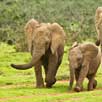
The forest department of the Bandhavgarh National Park organizes jungle Safari for the tourists to explore the forest. There are two types of Safaris are available to get inside the forest by acquiring the relevant entry permit. The park is divided into the four ecotourism zones which are Tala zone, Magadhi Zone, Khitauli Zone and Panpatha Zone. The Jeep Safari and Elephant Safari are organized regularly in all four tourism zones in the two shifts - morning and afternoon. The Tala zone and Magadhi zone are the most famous zone among the wildlife tourist as both the zones are having the very rich density of wildlife species and offer the best chances of tiger sighting. The wild animals, including the tigers, are accustomed to both the Safaris in the park so they come very close without any fear which results in an amazing close sighting for you. The forest department uses a tiger tracking method using the elephants in the morning and if any tiger is found then the elephant safari will be taken directly to that place for the guaranteed tiger sighting.
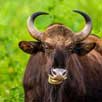
Apart from the exclusive wildlife and scenic view of the forest, the Bandhavgarh Fort is the prime tourist attraction for which the park is famous for. The fort is situated on the top of the Bandhavgarh Hill, which is located in the heart of the park. The accurate time of the construction of the fort is not known but it is said to be built anytime around 2000 years ago. Many dynasties had ruled the fort such as the Vakatakas, the Chandelas, the Maghas and others. The last ruler was the Royal family of Rewa, who has captured the fort during the 12th century and ruled till 1617 AD when they transferred their capital to the northern side and left the Fort deserted. Later, the forest around the fort became the hunting grounds for the family and friends of the Maharaja of Rewa.
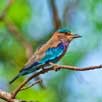
Like other National Parks in India, the Bandhavgarh National Park has also an opening and closing period for any tourism activity in the park. The park remains open for the tourists from 15th October to 30th June every year and remains closed for the rest of the year. The Bandhavgarh National Park can be explored best from mid-October to mid-March for the obvious reason of pleasant weather and the flourishing greenery. The winter season is the best time for touring the open forest without bothering for the scorching sun rays as in the summer. During the summer season, from April to June, the temperature is quite high which makes the touring in the open Jeep a bit difficult but the wildlife sighting is comparatively higher in this season. You can easily spot the wild animals around the water bodies quenching their thirst. During the monsoon season, from July to mid-October, the park remains closed for the tourist's.